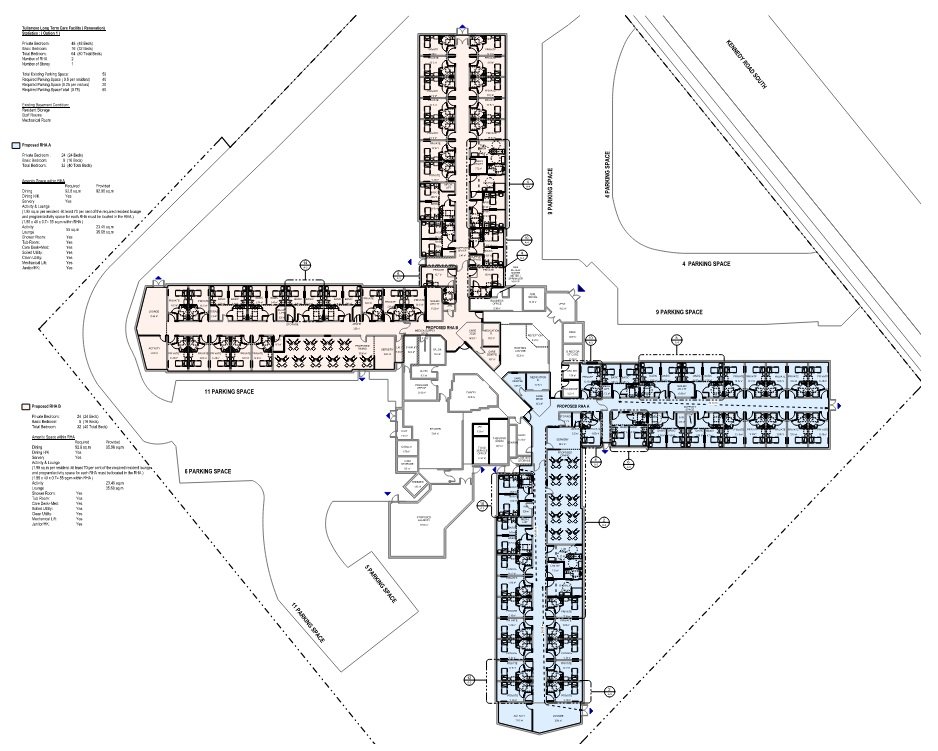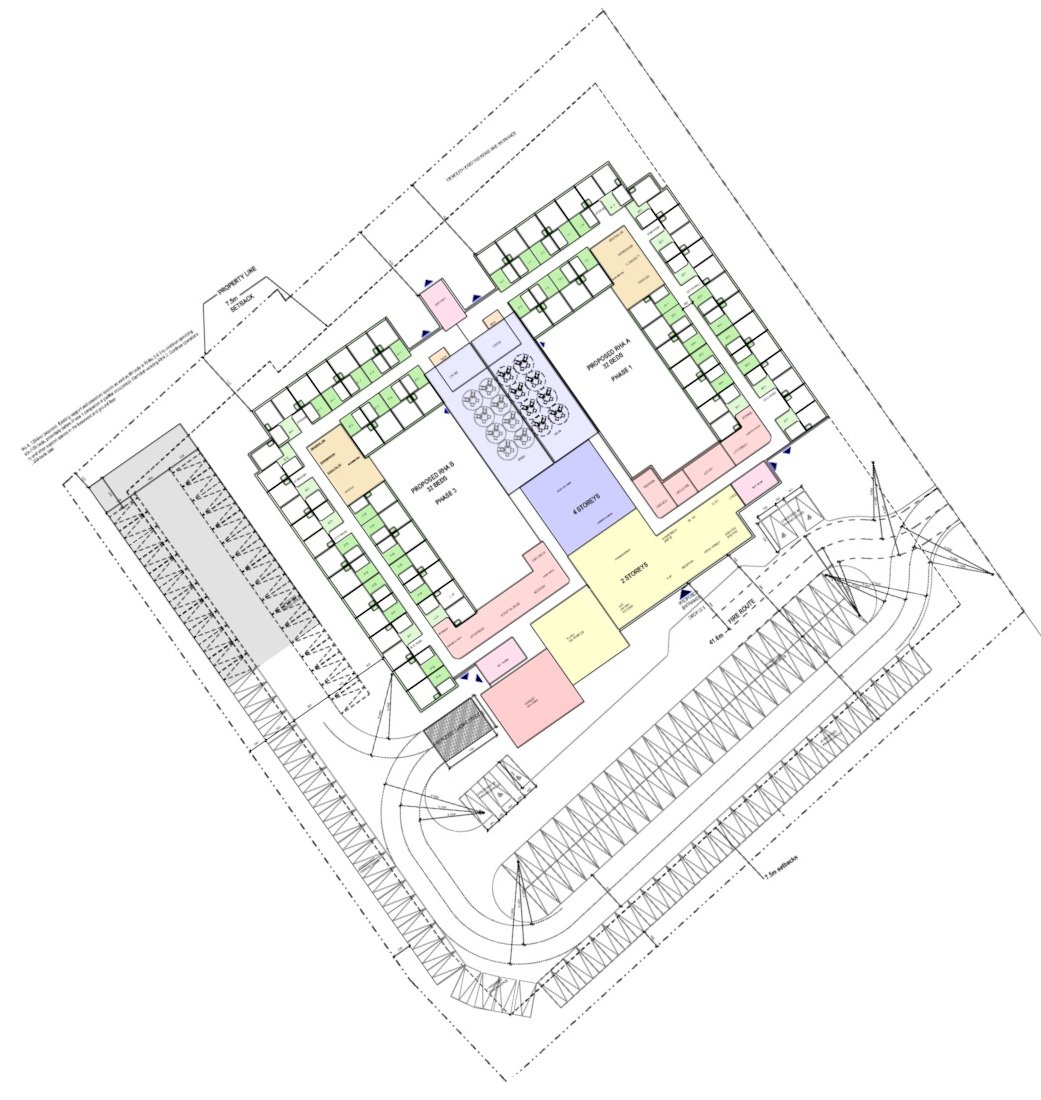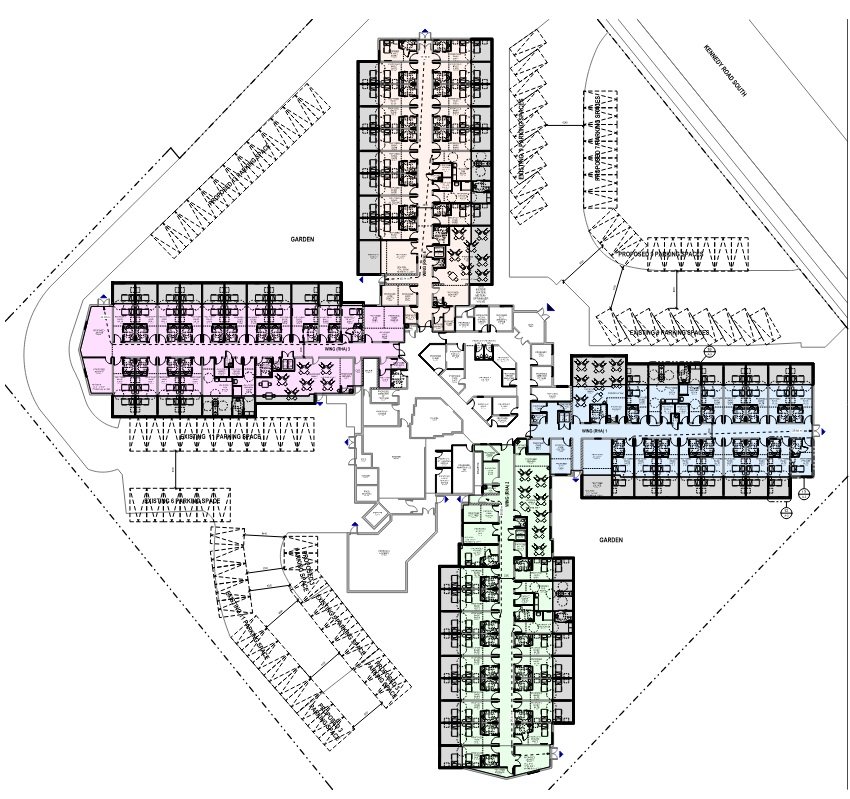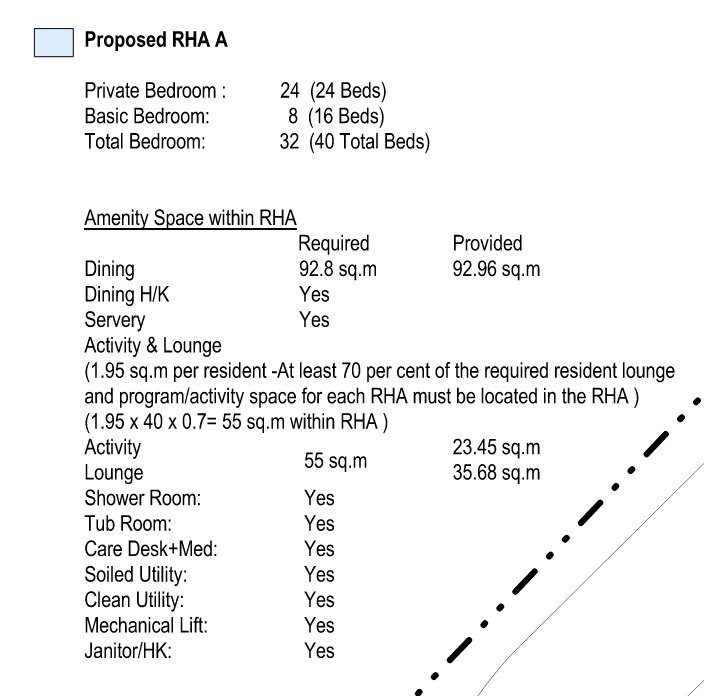Site A - Existing LTC Renovation
The client approached Murphy Partners to conduct a Needs and Options Review (NOR) on its site. The challenge was to maximize beds in a single-storey existing facility with insufficient areas to meet current requirements. Our analysis found the following MLTC and OBC non-compliances in the existing building:
The existing single-storey building holds 158 beds in 4 RHAs with mostly 3- and 4-beds wards (i.e. almost half the beds cannot be used after COVID).
Existing 2 beds (basic) rooms do not meet the MLTC minimum area requirements.
Existing ensuite washrooms do not provide enough space for wheelchair-turning circles.
Doors are not barrier-free accessible.
One dining room serves all 4 RHAs.
Bathing facilities are inadequately sized.
Amenity spaces do not meet the MLTC minimum area requirements. Some RHAs do not have any amenities within them.
The client must renovate the facility to meet current MLTC standards.
Murphy Partners provided 3 options for the client’s consideration before concluding the review:
80 beds in a single storey, 2-RHAs home. This option focused on staying within the existing building envelope to minimize renovation costs.
Demolish the existing building and construct a new building in multiple phases to allow all residents to remain on site. The final phase holds 256 beds in 8 RHAs organized in 4 storeys around two courtyards.
117 beds in a single storey, 4 RHAs home. This option calls for adding to/ extending the existing bedrooms with minimal disruption to structural or mechanical components. The focus was to increase the existing building area in a cost-effective design.
Each option provided floor plans, a full MLTC requirements analysis, and statistics for parking, GFA, and the number and type of beds in each RHA. Option 2 provided floor plans and statistics for each phase. We also provided statistics for the existing conditions for comparison. The designs considered the needs of continuing operations during construction, for example, parking and loading spaces.





